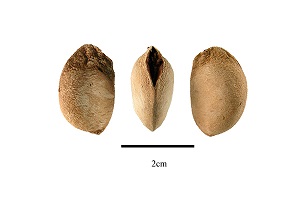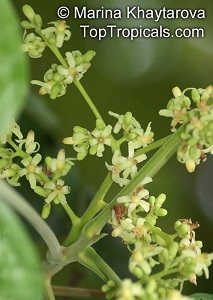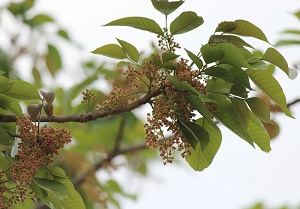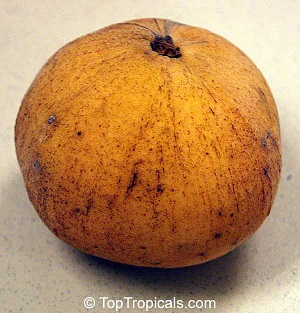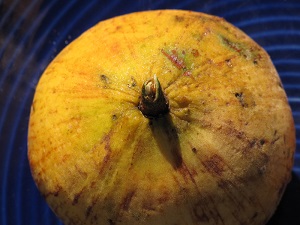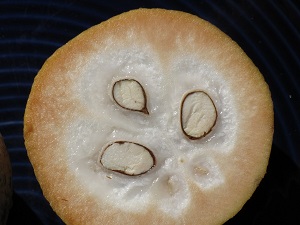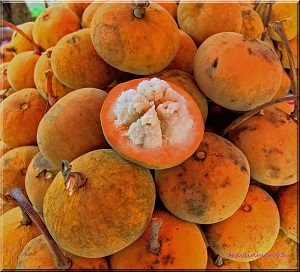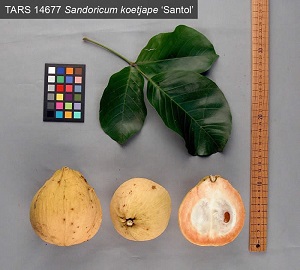| Santol - Sandoricum koetjape | ||||||||||||||||||
|---|---|---|---|---|---|---|---|---|---|---|---|---|---|---|---|---|---|---|
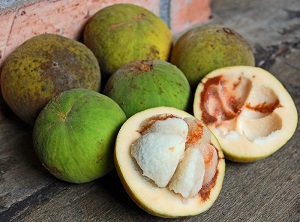 Fig. 1  Sandoricum koetjape 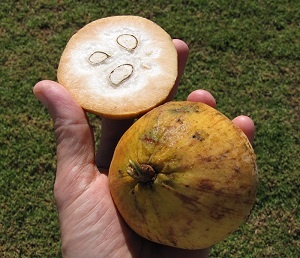 Fig. 2  Fruit in hand from Maui Mall farmers market Olinda, Maui, Hawai'i. 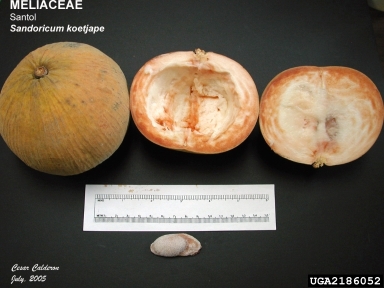 Fig. 3  S. koetjape (Santol) 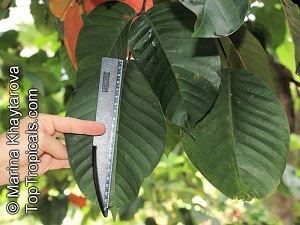 Fig. 4  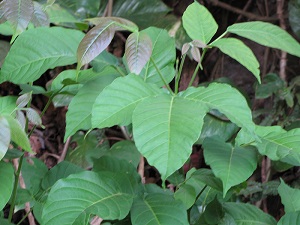 Fig. 5  S. koetjape, Santol leaf habit 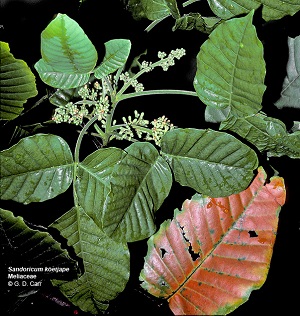 Fig. 6  S. koetjape, Santol inflorescense and leaves 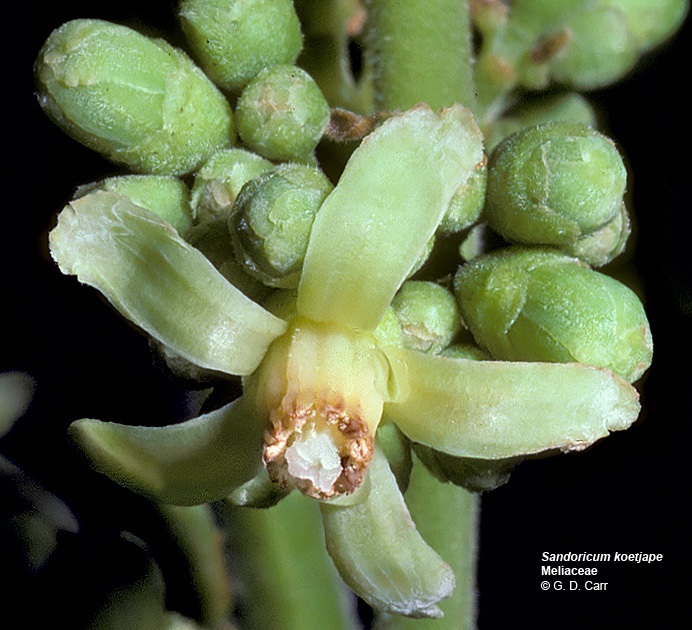 Fig. 7  Inflorescense close-up 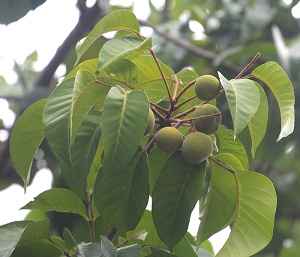 Fig. 10  S. koetjape unripe fruit 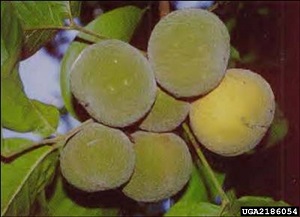 Fig. 11  Fruit habit 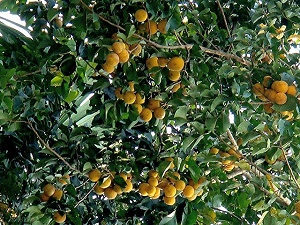 Fig. 12  S. koetjape (Burm. f.) Merr. Fruiting branches. Jeniang, Kedah, Malaysia.
 Seeds of S. koetjape 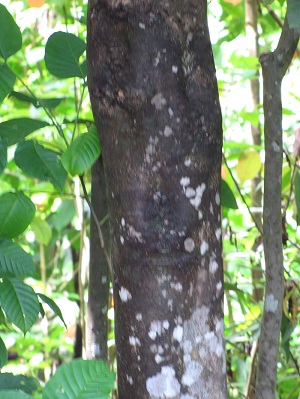 Fig. 20 Trunk and bark, Ulumalu Haiku, Maui, Hawai'i 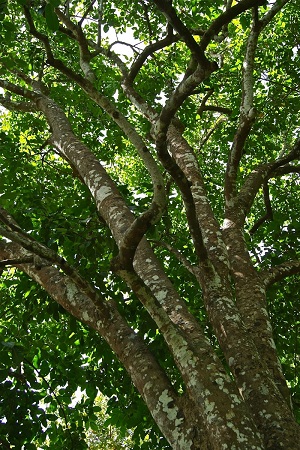 Fig. 21  A mature Santol S. koetjape tree in the Philippines towers 40 to 45 meters high. 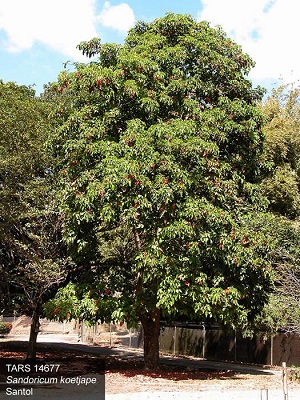 Fig. 22  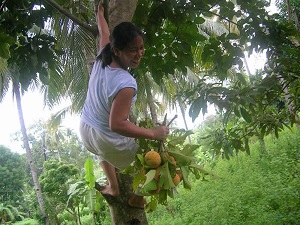 Fig. 23  The ripe fruits are harvested by climbing the tree and plucking by hand, alternatively a long stick with a forked end may be used to twist the fruits off. Zamboanga del Sur, Mindanao, Philippines. 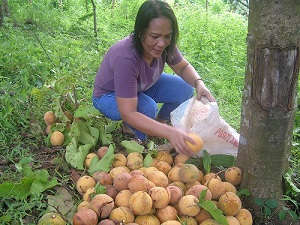 Fig. 24  Gathering plucked ripe fruits at the foot of the tree. Zamboanga del Sur, Mindanao, Philippines 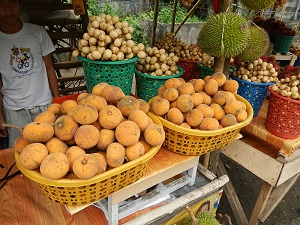 Fig. 25  Santols. Centro, downtown, town centre of Dupax del Norte, Nueva Vizcaya, Philippines. 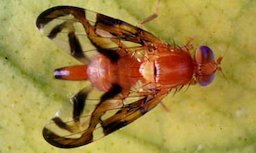 Fig. 26  Adult female Caribbean fruit fly, Anastrepha suspensa (Loew). |
Scientific
name Sandoricum koetjape (Burm.f.) Merr. Common names Sentieh, sentol, setol, sentul, setul, setui, kechapi or ketapi, in Malaya; saton, satawn, katon, or ka-thon in Thailand; kompem reach in Cambodia; tong in Laos; sau chua, sau tia, sau do, mangoustanier sauvage, or faux mangoustanier in North Vietnam. In the Philippines, it is santor or katul; in Indonesia, ketjapi or sentool; on Sarawak and Brunei, it is klampu. In India, it may be called sayai, sevai, sevamanu or visayan. In Guam, it is santor or wild mangosteen. 1 Synonyms Azedarach edule Noronha; Melia koetjape Burm.f.; Sa. indicum Cav.; S. maingayi Hiern; S. nervosum Blume 3 Family Meliaceae Origin Native to former Indochina and Malaya USDA hardiness zones 10-11 Uses Food; makes an excellent shade tree Height 50-150 ft (15-45 m) Crown Dense, narrowly oval crown Plant habit Branched close to the ground and buttressed when old 1 Growth rate Fast-growing Trunk/bark/branches Straight trunk, pale bark; branchlets are densely brown-hairy 1 Leaves Evergreen, or very briefly deciduous, spirally-arranged leaves; compound, with 3 leaflets, elliptic to oblong-ovate, 4 to 10 in (20-25 cm) long, blunt at the base and pointed at the apex 1 Flowers Greenish, yellowish, or pinkish-yellow; 5-petalled flowers; 3/8 in (1 cm) long; borne on the young branchlets in loose, stalked panicles 6-12 in (15-30 cm) 1 Fruit Round; 2 in. (5.08); tough brown skin; white pulp in five segments Season August-September Light requirement Full sun Soil tolerances Grows well in acid sandy soil and oolitic limestone, but in the latter the foliage becomes chlorotic 1 Drought tolerance The species is hardy and thrives without irrigation in areas with a prolonged dry season 4 Aerosol salt tolerance Unknown Soil salt tolerance Unknown Cold tolerance Harm 36 °F (2.22 °C), kill 31°F (-0.56 °C) Invasive potential * None reported Known hazard The seeds of S. koetjape contain limonoids (antifeedant compounds) 4 Reading Material The Santol, Manual Of Tropical And Subtropical Fruits Santol, Fruits of Warm Climates Sandoricum koetjape (Burm. f.) Merr., Agroforestree Database Origin The santol is believed native to former Indochina (especially Cambodia and southern Laos) and Malaya, and to have been long ago introduced into India, the Andaman Islands, Malaysia, Indonesia, the Moluccas, Mauritius, and the Philippines where it has become naturalized. 1 Description "The santol," writes P. J. Wester, "is one of the most widely distributed fruits in the Philippines. The tree is hardy, of vigorous and rapid growth, and succeeds well even where the dry season is prolonged. The fruit is produced in great abundance, in fact in such profusion that large quantities annually rot on the ground during the ripening season, which extends principally from July to October. It should be stated that the waste of the fruit is due principally to its poor quality; in fact, from the European point of view most of the santols are barely edible. However, now and then trees are found whose fruit is of most excellent flavor, and when a fruit shall have been found that also has the feature of being seedless or semi-seedless, like the mangosteen, it is believed the now practically unknown santol will become one of the most popular of the tropical fruits." 2 Flowers Flowers in an axillary thyrse, bisexual, 4-5 merous; calyx truncate to shallowly lobed; petals free; staminal tube cylindrical, carrying 10 anthers; disk tubular; ovary superior, 4-5-locular with 2 ovules in each cell, stylehead lobed. 4
Fruit The fruit (technically a capsule) is globose or oblate, with wrinkles extending a short distance from the base; 1 1/2 to 3 in (4-7.5 cm) wide; yellowish to golden, sometimes blushed with pink. The downy rind may be thin or thick and contains a thin, milky juice. It is edible, as is the white, translucent, juicy pulp (aril), sweet, subacid or sour, surrounding the 3 to 5 brown, inedible seeds which are up to 3/4 in (2 cm) long, tightly clinging or sometimes free from the pulp. 1
Fig. 13. Sandoricum koetjape (Santol). Fruit from Maui Mall farmers market. Olinda, Maui, Hawai'i. Fig. 14,15,16. Fruit from Maui Mall farmers market Olinda, Maui, Hawai'i. Fig. 17. Gratorn fruit, Santol Varieties There are two general types of santol: the Yellow (formerly S. indicum or S. nervosum); and the Red (formerly S. koetjape). Harvesting The ripe fruits are harvested by climbing the tree and plucking by hand, alternatively a long stick with a forked end may be used to twist the fruits off (Fig. 18). 1 Pollination Pollination is by insects. Propagation By Seed, Grafting, Air-Layering or by Budding onto self rootstocks. Seeds have been introduced into Florida several times since 1931. Most of the seedlings have succumbed to cold injury. At least 3 have survived to bearing age in special collections. Grafted plants from the Philippines have fruited well at Fairchild Tropical Garden, Miami. 1 Pests The Caribbean fruit fly Anastrepha suspensa pdf 8 pages causes freckle-like blemishes on the surface of the fruit but cannot penetrate the rind. 1 Food Uses The fruit is usually consumed raw without peeling. The pulp is eaten raw and plain or with spices added. It is also cooked and candied or made into marmalade. 1 Medicinal Properties ** The preserved pulp is employed medicinally as an astringent, as is the quince in Europe. Crushed leaves are poulticed on itching skin. 1 Other Uses "The wood of this tree is hard and smooth to the touch. It makes good timber. As a boy, I knew that it made the best slingshots." Alex Pronove, commons.wikimedia.org List of Growers and Vendors |
|||||||||||||||||
| Bibliography 1 Fruits of Warm Climates. Julia F. Morton, Miami, 1987. 2 Popenoe, Wilson. Manual Of Tropical And Subtropical Fruits. 1920, London, Hafner Press, 1974. 3 Sandoricum koetjape (Burm.f.) Merr. synonyms. The Plant List (2010). Version 1. theplantlist.org. Web. 13 Feb. 2017. 4 Orwa, C., et al. "Sandoricum koetjape (Burm. f.) Merr." worldagroforestry.org. Agroforestree Database:a tree reference and selection guide version 4.0. 2009. Web. 14 Feb. 2017. Photographs Fig. 1 Wie 146. Sandoricum koetjape fruit from Darmaga, Bogor, West Java, Indonesia. 2007. commons.wikimedia.org. Web. 2 Jan. 2015. Fig. 2 Starr, Forest and Kim. Sandoricum koetjape (Santol). Fruit in hand from Maui Mall farmers market Olinda, Maui, Hawai'i. 2009. starrenvironmental.com. (CC BY 4.0). Web. 2 Jan. 2015. Fig. 3,11 Calderone, C. Santol, Sandoricum koetjape (Burm. f.) Merr. 2005. USDA APHIS PPQ. bugwood.org. (CC BY 3.0 US). Web. 2 Jan. 2015. Fig. 4,8 Khaytarova, Marina. Sandoricum koetjape. N.d. Top Tropicals Tropical Plant Catalog. toptropicals.com. Web. 2 Jan. 2015. Fig. 5 Starr, Forest and Kim. Sandoricum koetjape (Santol) Leaves. 2009. Honokahau Valley, Maui,Hawai'i. starrenvironmental.com. (CC BY 4.0). Web. 2 Jan. 2015. Fig. 6,7 Carr, Gerald,D. Sandoricum koetjape, Meliaceae. N.d. University of Hawai'i, Botany Department, Mānoa Campus Plants. botany.hawaii.edu. Web. 2 Jan. 2015. Fig. 9 Cerlin Ng. Sandoricum koetjape inflorescense. 2014. flickr.com. (CC BY-NC-ND 2.0). Web. 14 Feb. 2017. Fig. 10 Cerlin Ng. Sandoricum koetjape, unripe fruit. 2015. flickr.com. (CC BY-NC-ND 2.0). Web. 14 Feb. 2017. Fig. 12 Morad, Ahmad Fuad. Sandoricum koetjape (Burm. f.) Merr. Fruiting branches. Jeniang, Kedah, Malaysia. 2011. flickr.com. (CC BY-NC-ND 2.0). Web. 14 Feb. 2017. Fig. 13 Sandoricum koetjape, Sandoricum indicum. N.d. toptropicals.com. Web. 2 Jan. 2015. Fig. 14,15,16 Starr, Forest and Kim. Sandoricum koetjape Santol. Fruit from Maui Mall farmers market Olinda, Maui, Hawai'i. 2009. starrenvironmental.com. (CC BY 4.0). Web. 2 Jan. 2015. Fig. 17 Steve. The Gratorn. 2009. commons.wikimedia.org. via flickr.com. (CC BY-SA 2.0). Web. 3 Jan. 2015. Fig. 18,22 Sandoricum koetjape 'Santol'. N.d. USDA, ARS, National Genetic Resources Program. Germplasm Resources Information Network - (GRIN) [Online Database]. National Germplasm Resources Laboratory, Beltsville, Maryland. ars-grin.gov. Web. 2 Jan. 2015. Fig. 19 Gibbons, Robert J. Seeds of Sandoricum koetjape. U. S. National Seed Herbarium. USDA, ARS, National Genetic Resources Program. Germplasm Resources Information Network - (GRIN) [Online Database]. National Germplasm Resources Laboratory, Beltsville, Maryland. ars-grin.gov. Web. 2 Jan. 2015. Fig. 20 Starr, Forest and Kim. Santol, Sandoricum koetjape, trunk and bark. Kaiku, Maui, Hawai'i. 2009. starrenvironmental.com. (CC BY 4.0). Web. 2 Jan. 2015. Fig. 21 Provone, Alex (alexcooper1). A mature Santol Sandoricum koetjape tree in the Philippines towers 40 to 45 meters high. 2011. commons.wikimedia.org. (CC BY 3.0 US). Web. 2 Jan. 2015. Fig. 23 Dioscora. The ripe fruits are harvested by climbing the tree and plucking by hand, alternatively a long stick with a forked end may be used to twist the fruits off. 2006. Zamboanga del Sur, Mindanao, Philippines. commons.wikimedia.org. (CC BY 2.5). Web. 2 Jan. 2015. Fig. 24 Ayavoo, Rizza. Gathering plucked ripe fruits at the foot of the tree. 2006. Zamboanga del Sur, Mindanao, Philippines. commons.wikimedia.org. (CC BY 2.5). Web. 2 Jan. 2015. Fig. 25 FVelasquez, Ramon. Santols. Centro, downtown, town centre of Dupax del Norte, Nueva Vizcaya, Philippines. 2013. commons.wikimedia.org. (CC BY 3.0 US). Web. 14 Feb. 2017. Fig. 26 Adult female Caribbean fruit fly, Anastrepha suspensa (Loew). N.d. Division of Plant Industry. edis.ifas.ufl.edu. Web. 2 Jan. 2015. Sandoricum
koetjape (Burm. f.) Merr.
* UF/IFAS
Assessment of Non-native Plants in Florida's Natural Areas** Information provided is not intended to be used as a guide for treatment of medical conditions. Published 2 Jan. 2015 LR. Last update 7 Apr. 2018 LR |
||||||||||||||||||
